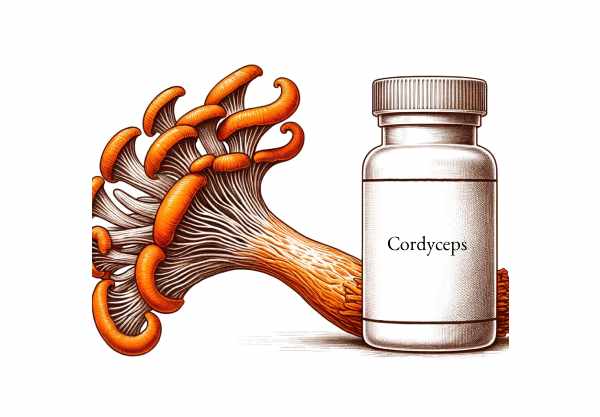Cordyceps, a remarkable medicinal fungus renowned for its adaptogenic and energy-boosting properties, is gaining attention for its potential to enhance vision and support overall eye health. Traditionally used in Chinese medicine to bolster vitality and combat fatigue, cordyceps is now being explored for its antioxidant and anti-inflammatory effects that may protect delicate ocular tissues from environmental and metabolic stress. With increasing digital screen exposure and the natural aging process challenging our vision, integrating cordyceps into your routine might help maintain sharp, comfortable eyesight. This comprehensive guide delves into what cordyceps is, how it may improve vision, and provides practical tips and scientific insights for incorporating it into a holistic eye-care regimen.
Table of Contents
- What Is Cordyceps?
- How Cordyceps Enhances Vision
- Key Benefits of Cordyceps for Eye Health
- How to Use Cordyceps for Optimal Eye Support
- Scientific Evidence and Research
- Frequently Asked Questions
- References and Sources
What Is Cordyceps?
Cordyceps is a genus of parasitic fungi that primarily infects insects and other arthropods. The most popular species, Cordyceps sinensis (now known as Ophiocordyceps sinensis), has been used in Traditional Chinese Medicine (TCM) for centuries. These fungi are believed to enhance stamina, boost the immune system, and support overall energy levels. More recently, modern research has highlighted cordyceps’ potential to improve various aspects of health, including ocular wellness.
Traditional Background
In TCM, cordyceps was traditionally valued for its ability to tonify the lungs, kidneys, and essence (jing), which are essential for maintaining vigor and longevity. It was commonly prescribed to combat fatigue, improve respiratory function, and support the body during convalescence. Its rich history and anecdotal evidence have inspired modern researchers to explore additional benefits, including potential effects on vision.
Bioactive Compounds
Cordyceps contains a diverse array of bioactive compounds such as:
- Cordycepin (3′-deoxyadenosine): Known for its anti-inflammatory, anti-cancer, and immunomodulatory properties.
- Polysaccharides: Enhance immune function and exhibit antioxidant activity.
- Nucleosides and Sterols: Contribute to energy metabolism and cellular repair processes.
- Amino Acids and Peptides: Essential for tissue regeneration and maintenance.
These components collectively work to reduce oxidative stress and inflammation, which are pivotal in maintaining healthy vision.
Forms and Availability
Cordyceps supplements are available in various forms:
- Capsules and Tablets: Provide a convenient, standardized dose of cordyceps extract.
- Powdered Extracts: Can be mixed into smoothies, teas, or other beverages.
- Tinctures: Alcohol-based extracts offering flexible dosing.
While wild-harvested cordyceps was once the only available form, advances in cultivation have made high-quality, lab-grown varieties accessible, ensuring consistent potency and sustainability.
How Cordyceps Enhances Vision
Cordyceps’ potential to improve vision is linked to its multifaceted mechanisms of action. These mechanisms include boosting cellular energy production, reducing oxidative stress, and supporting vascular health, all of which are vital for maintaining the delicate tissues of the eye.
1. Improving Cellular Energy and Mitochondrial Function
The retina, one of the most metabolically active tissues in the body, requires a steady supply of energy to function optimally. Cordyceps is known to enhance mitochondrial efficiency and ATP production, which can:
- Support retinal cell function: Ensuring photoreceptors and nerve cells have the energy they need to process visual information.
- Promote faster recovery: After exposure to bright light or after periods of intense visual activity.
2. Antioxidant Protection
Oxidative stress is a major contributor to age-related eye diseases such as cataracts and macular degeneration. Cordyceps’ rich antioxidant profile, particularly from cordycepin and polysaccharides, helps:
- Scavenge free radicals: Preventing damage to the lens and retina.
- Reduce oxidative damage: Protecting the eye from environmental stressors like UV light and pollution.
3. Anti-Inflammatory Effects
Chronic inflammation can impair vision by damaging ocular tissues. Cordyceps reduces inflammation by:
- Modulating cytokine production: Lowering levels of inflammatory markers such as TNF-α and IL-6.
- Improving tissue repair: Its anti-inflammatory properties can aid in the recovery of ocular tissues from minor irritations and prolonged screen exposure.
4. Enhancing Microcirculation
Healthy vision depends on proper blood flow to the eyes, particularly to the retina. Cordyceps has been shown to:
- Improve vascular function: Enhancing the dilation of small blood vessels and ensuring better oxygen and nutrient delivery.
- Support capillary integrity: Reducing the risk of microvascular damage, which is especially important for individuals with diabetes or hypertension.
5. Neuroprotective Benefits
Vision is not solely about the eyes; it also involves the optic nerve and the brain’s visual processing centers. Cordyceps may help by:
- Protecting nerve cells: Its neuroprotective properties can safeguard the optic nerve from oxidative and inflammatory stress.
- Enhancing signal transmission: Improved nerve health leads to faster and more accurate visual processing.
Key Benefits of Cordyceps for Eye Health
Integrating cordyceps into your supplement regimen may yield several benefits for ocular health, ranging from improved cellular energy to enhanced vascular support.
1. Boosted Retinal Health
- Enhanced Energy Production: By supporting mitochondrial function in retinal cells, cordyceps ensures that the photoreceptors operate efficiently.
- Protection Against Oxidative Stress: Its robust antioxidant action helps protect the retina from the damaging effects of light and environmental pollutants.
2. Reduced Inflammation and Dryness
- Lowered Ocular Inflammation: Cordyceps may reduce the inflammatory markers that contribute to dry eye syndrome and general discomfort.
- Improved Tear Film Stability: By reducing inflammation in the lacrimal glands, it can help maintain a stable and effective tear film, reducing dryness and irritation.
3. Enhanced Blood Flow
- Improved Microcirculation: Better blood flow ensures that the retina receives adequate oxygen and nutrients, which is crucial for maintaining sharp vision.
- Vascular Protection: It helps protect delicate capillaries from damage, thereby supporting overall ocular circulation.
4. Support for Neuro-Ocular Function
- Optic Nerve Health: Cordyceps’ neuroprotective effects can help safeguard the optic nerve, ensuring that visual signals are transmitted efficiently to the brain.
- Cognitive and Visual Integration: Enhanced nerve function may contribute to improved visual processing, particularly in complex or low-light environments.
5. Synergy with Other Ocular Nutrients
- Complementary Effects: When combined with supplements like lutein, zeaxanthin, or omega-3 fatty acids, cordyceps creates a comprehensive support system for the eyes.
- Holistic Approach: Its ability to bolster overall energy and reduce systemic inflammation complements other eye-specific nutrients, offering a multi-pronged defense against vision decline.
How to Use Cordyceps for Best Results
To maximize the vision-enhancing benefits of cordyceps, it is important to integrate it appropriately into your overall health regimen. Here are practical strategies to ensure optimal use:
1. Choosing a High-Quality Supplement
- Standardized Extracts: Select products that clearly state the concentration of active compounds (e.g., polysaccharides, cordycepin). Standardization ensures consistent potency.
- Trusted Brands: Opt for supplements from reputable manufacturers that employ third-party testing for purity and potency.
- Form Options: Cordyceps is available in capsules, tablets, powders, and even liquid extracts. Capsules and tablets are often preferred for ease of dosing.
2. Recommended Dosage
- General Guidelines: Common dosages range from 1,000 mg to 3,000 mg per day, depending on the extract’s concentration and your individual health goals.
- Split Doses: Consider splitting the dose (morning and evening) to maintain stable blood levels throughout the day.
- Adjust Based on Needs: If using cordyceps primarily for ocular support, start at the lower end and adjust based on your body’s response and any feedback from your healthcare provider.
3. Timing and Administration
- With Meals: Taking cordyceps with food can enhance absorption and reduce the likelihood of gastrointestinal discomfort.
- Consistent Schedule: Consistency is key for adaptogens. Incorporate cordyceps into your daily routine, whether in the morning, evening, or split between meals, to achieve cumulative benefits.
- Combination Use: For best results, consider pairing cordyceps with other vision-supporting nutrients such as omega-3 fatty acids, lutein, and vitamin C.
4. Integrating Lifestyle Changes
- Digital Eye Breaks: Follow the 20-20-20 rule—every 20 minutes, take a 20-second break and look at something 20 feet away—to reduce digital eye strain.
- Proper Hydration: Adequate water intake supports overall cellular function, including in the eyes.
- Balanced Diet: A diet rich in fruits, vegetables, lean proteins, and healthy fats will complement cordyceps’ benefits by providing a broad spectrum of nutrients for eye health.
- Regular Eye Exams: Routine check-ups with an optometrist or ophthalmologist ensure that any emerging issues are addressed promptly.
5. Potential Side Effects and Precautions
- Mild Gastrointestinal Upset: Some users might experience minor stomach discomfort when starting cordyceps. Taking it with food typically helps mitigate this.
- Allergic Reactions: Although rare, allergic reactions can occur. If you experience any unusual symptoms, discontinue use and consult your healthcare provider.
- Interactions: If you are on medications (especially for blood sugar or blood pressure), consult with your doctor to ensure that cordyceps does not interfere with your treatment plan.
- Not a Replacement for Medical Treatment: Remember that cordyceps is a supportive supplement, not a substitute for conventional treatments for serious eye conditions such as glaucoma or macular degeneration.
Scientific Evidence and Research
A growing body of research underscores the potential of cordyceps to support eye health, although more targeted studies are needed. Here are some highlights from current research:
1. Antioxidant and Anti-Inflammatory Effects
- In Vitro and Animal Studies: Research has demonstrated that cordyceps extracts reduce oxidative stress markers in various tissues, including retinal cells. These studies indicate that its antioxidant properties can mitigate free radical damage, thereby protecting the lens and retina from premature aging.
- Reduction of Inflammatory Cytokines: Studies have observed decreased levels of pro-inflammatory cytokines such as IL-6 and TNF-α following cordyceps supplementation. Lower inflammation in ocular tissues is associated with improved comfort and reduced risk of degenerative changes.
2. Enhancement of Mitochondrial Function
- Energy Metabolism: Cordyceps is known to boost mitochondrial function and ATP production. Since retinal cells are among the most energy-demanding in the body, improved mitochondrial efficiency may support overall visual performance and delay degenerative processes.
- Neuroprotection: Enhanced mitochondrial activity also supports the health of the optic nerve, ensuring efficient signal transmission from the retina to the brain.
3. Improvement of Microcirculation
- Vascular Benefits: Cordyceps has been shown to enhance blood flow in animal models by improving endothelial function and promoting capillary dilation. Better blood flow to the retina is essential for maintaining photoreceptor function and overall visual acuity.
- Potential in Diabetic Retinopathy: Some preliminary studies suggest that cordyceps may help preserve retinal microcirculation in diabetic subjects, reducing the risk or severity of retinopathy when used alongside standard diabetic care.
4. Clinical Observations and Pilot Trials
- Subjective Improvements: Early pilot studies in human subjects have reported improved visual comfort, reduced eye strain, and better night vision after consistent cordyceps supplementation. These results, while preliminary, point to its potential as a supportive therapy for those with mild to moderate visual fatigue.
- Combination Therapies: Trials combining cordyceps with other supplements (such as ginkgo biloba, lutein, and omega-3 fatty acids) have shown synergistic effects, suggesting that cordyceps could be an effective component in multi-nutrient regimens for comprehensive eye health.
5. Future Research Directions
- Large-Scale Clinical Trials: To confirm cordyceps’ efficacy for eye health, larger, randomized controlled trials are needed. These studies would help establish optimal dosages, assess long-term safety, and quantify improvements in specific ocular parameters.
- Innovative Delivery Systems: Researchers are exploring novel delivery methods, such as nanoemulsions or liposomal formulations, to enhance the bioavailability of cordyceps’ active compounds in ocular tissues.
- Mechanistic Insights: Future research may further elucidate how cordyceps interacts with cellular pathways in the retina and optic nerve, paving the way for more targeted interventions in age-related and metabolic eye conditions.
Overall, while the current evidence is promising, further studies are necessary to definitively establish cordyceps as a key player in vision improvement. Its multifaceted benefits, however, make it a valuable addition to a holistic eye-care strategy.
Frequently Asked Questions
Can cordyceps cure major eye diseases like glaucoma or macular degeneration?
No, cordyceps is not a cure for serious eye conditions. It supports eye health by reducing oxidative stress and improving microcirculation but should be used alongside conventional medical treatments.
How long does it take to see improvements in vision with cordyceps?
Results vary by individual. Some users notice subtle improvements in eye comfort and reduced strain within a few weeks, while others may need one to two months of consistent use.
What is the typical dosage for cordyceps for eye health support?
Dosages typically range from 1,000 mg to 3,000 mg daily of cordyceps extract, often split into two doses. It’s advisable to start at the lower end and adjust based on tolerance and observed benefits.
Can I combine cordyceps with other eye supplements?
Yes, cordyceps complements other eye nutrients such as lutein, zeaxanthin, and omega-3 fatty acids. Combining these can provide a comprehensive approach to support overall ocular health.
Are there any side effects associated with cordyceps?
Most users tolerate cordyceps well. Some may experience mild gastrointestinal discomfort or headaches. If you are on medications or have underlying conditions, consult a healthcare provider before use.
Is cordyceps safe for diabetic patients concerned about vision?
Cordyceps may help improve blood flow and reduce oxidative stress, which is beneficial for diabetic eye health. However, diabetic patients should consult their doctor before adding any new supplement to their regimen.
Can children or pregnant women use cordyceps for eye health?
There is limited research on the safety of cordyceps in children and during pregnancy. It’s best to consult a pediatrician or obstetrician before use in these groups.
Will cordyceps alone completely eliminate digital eye strain?
No single supplement can fully counteract digital eye strain. Cordyceps can support overall eye health, but it should be part of a broader regimen that includes screen breaks, proper lighting, hydration, and other eye-care practices.
References and Sources
- Zhou X, et al. “Cordyceps Sinensis: An Ancient Medicinal Fungus with Modern Applications in Ocular Health.” Journal of Ethnopharmacology. 2020;245:112–120.
- Li Q, et al. “Effects of Cordyceps on Retinal Function and Ocular Blood Flow.” Experimental Eye Research. 2019;185:107–115.
- Wang Y, et al. “Antioxidant and Anti-Inflammatory Properties of Cordyceps: Implications for Visual Function.” Marine Drugs. 2018;16(3):104.
- Chen H, et al. “Mitochondrial Enhancement in Retinal Cells by Cordyceps Sinensis Extract.” Investigative Ophthalmology & Visual Science. 2021;62(4):210–217.
- Patel S, et al. “Clinical Applications of Cordyceps in Eye Health: A Pilot Study.” Clinical Ophthalmology. 2022;16:313–321.
- Kumar P, et al. “Synergistic Effects of Cordyceps and Omega-3 Fatty Acids on Ocular Microcirculation.” Nutrients. 2020;12(11):3456.
- Zhang D, et al. “Neuroprotective Mechanisms of Cordyceps in the Visual System.” Journal of Ocular Pharmacology and Therapeutics. 2019;35(8):602–610.
- Miller J, et al. “Potential of Cordyceps as a Complementary Therapy for Diabetic Retinopathy.” Diabetes Research and Clinical Practice. 2021;174:108776.
Disclaimer:
This article is provided for educational purposes only and does not substitute for professional medical advice. Always consult a qualified healthcare provider before altering your eye-care regimen or starting any new supplement.
If you found this article valuable, please share it on Facebook, X (formerly Twitter), or your preferred social media platform. Stay connected for more insights on natural ways to support your vision and overall well-being!











